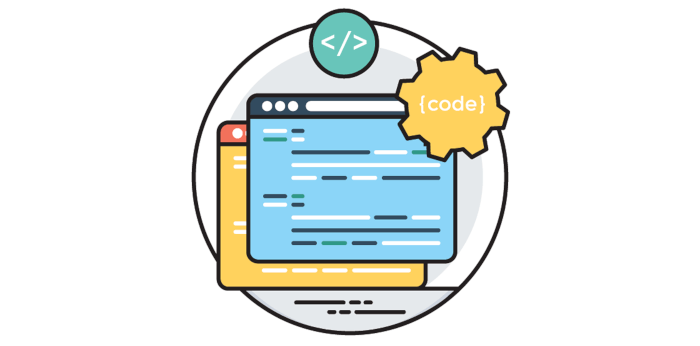Pyramid is a web microframework for Python 2 and 3. It makes real-world web application development and deployment more fun, more predictable, and more productive.
Features include:
- Fast in operation.
- Function Decorators.
- Predicates – tests which returns True or False. Two different types of predicates exist in Pyramid: a view predicate and a route predicate. View predicates are attached to view configuration and route predicates are attached to route configuration.
- Renderers – a serializer which converts non-Response return values from a view into a string, and ultimately into a response, usually through view configuration.
- Asset Specifications – a colon-delimited identifier for an asset. The colon separates a Python package name from a package subpath. For example, the asset specification my.package:static/baz.css identifies the file named baz.css in the static subdirectory of the my.package Python package.
- Events and Subscribers – use events to coordinate actions.
- Configure applications with decorators – keep your configuration right next to your code.
- Build single-file applications which makes deployment easier.
- Use multiple templating systems, even in the same project.
- Provides flexible, consistent, easy to use tools for generating URLs.
- Flexible tools for serving JavaScript, CSS, images and other static assets.
- Automatically detect changes you make to template files and code, so your changes are immediately available in your browse.
- Add-ons extend the core of the framework with extra functionality.
- Static assets are located using asset specifications, strings that contain reference both to a Python package name and a file or directory name.
- Built-in support for HTTP sessions, so you can associate data with specific users between requests. Plug in your own custom sessioning system.
- Internationalization-related features in its core: localization, pluralization, and creating message catalogues from source files and templates.
- Easy way to cache the results of slow or expensive views
- Fully compatible with Python 3.
- Good documentation is available.
Website: trypyramid.com
Support: Resources, GitHub Code Repository
Developer: Agendaless Consulting and a team of contributors
License: BSD-derived Repoze Public License
Pyramid is written in Python. Learn Python with our recommended free books and free tutorials.
Return to Python Microframeworks
| Popular series | |
|---|---|
| The largest compilation of the best free and open source software in the universe. Each article is supplied with a legendary ratings chart helping you to make informed decisions. | |
| Hundreds of in-depth reviews offering our unbiased and expert opinion on software. We offer helpful and impartial information. | |
| The Big List of Active Linux Distros is a large compilation of actively developed Linux distributions. | |
| Replace proprietary software with open source alternatives: Google, Microsoft, Apple, Adobe, IBM, Autodesk, Oracle, Atlassian, Corel, Cisco, Intuit, SAS, Progress, Salesforce, and Citrix | |
| Awesome Free Linux Games Tools showcases a series of tools that making gaming on Linux a more pleasurable experience. This is a new series. | |
| Machine Learning explores practical applications of machine learning and deep learning from a Linux perspective. We've written reviews of more than 40 self-hosted apps. All are free and open source. | |
| New to Linux? Read our Linux for Starters series. We start right at the basics and teach you everything you need to know to get started with Linux. | |
| Alternatives to popular CLI tools showcases essential tools that are modern replacements for core Linux utilities. | |
| Essential Linux system tools focuses on small, indispensable utilities, useful for system administrators as well as regular users. | |
| Linux utilities to maximise your productivity. Small, indispensable tools, useful for anyone running a Linux machine. | |
| Surveys popular streaming services from a Linux perspective: Amazon Music Unlimited, Myuzi, Spotify, Deezer, Tidal. | |
| Saving Money with Linux looks at how you can reduce your energy bills running Linux. | |
| Home computers became commonplace in the 1980s. Emulate home computers including the Commodore 64, Amiga, Atari ST, ZX81, Amstrad CPC, and ZX Spectrum. | |
| Now and Then examines how promising open source software fared over the years. It can be a bumpy ride. | |
| Linux at Home looks at a range of home activities where Linux can play its part, making the most of our time at home, keeping active and engaged. | |
| Linux Candy reveals the lighter side of Linux. Have some fun and escape from the daily drudgery. | |
| Getting Started with Docker helps you master Docker, a set of platform as a service products that delivers software in packages called containers. | |
| Best Free Android Apps. We showcase free Android apps that are definitely worth downloading. There's a strict eligibility criteria for inclusion in this series. | |
| These best free books accelerate your learning of every programming language. Learn a new language today! | |
| These free tutorials offer the perfect tonic to our free programming books series. | |
| Linux Around The World showcases usergroups that are relevant to Linux enthusiasts. Great ways to meet up with fellow enthusiasts. | |
| Stars and Stripes is an occasional series looking at the impact of Linux in the USA. | |
